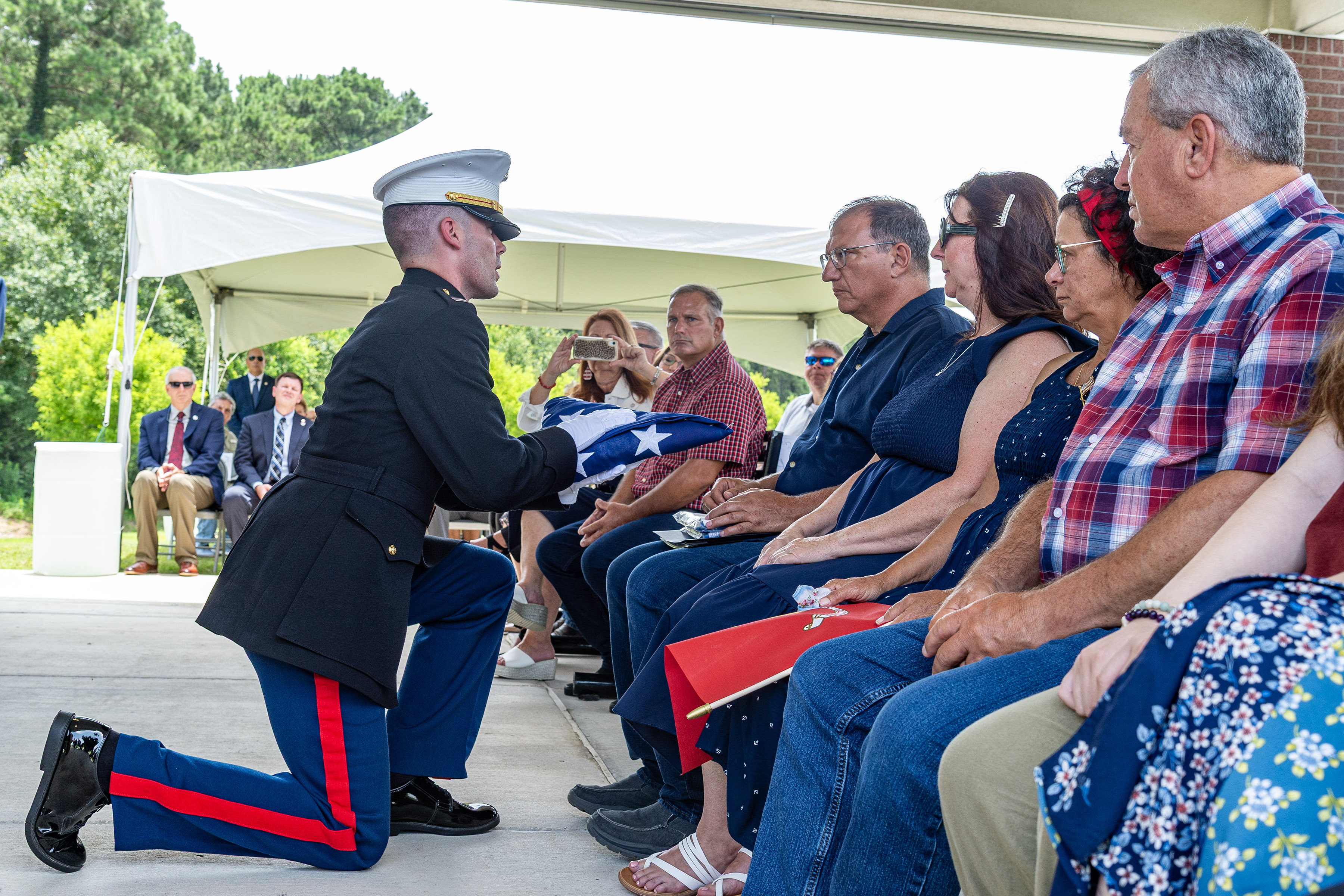Trees, lumber and roots: Inside the Johnsons’ timber-framed home
Published 3:05 pm Monday, November 3, 2014
Julie and Jeff Johnson love family and equate it with home. Home is Bel in Allen Parish. A lot of people confuse Bel with Bell City, according to Julie’s father in law, J.B. Johnson. The closest town, The Village of Reeves, is a couple of miles east on Hwy. 12. The population of Reeves is around 200.
Julie admits she enjoys the energy of the city life. She’s been there, done that. “But I love that I can raise my children in the country.” A couple in their 40s, Julie and Jeff are dad and mom to a second go ‘round of child rearing with five year olds Rhonda and Madeline Gail. Their boys, Christopher and Brandon are grown with children of their own.
The Johnsons take great pride of place in the area they call home, as did their parents and grandparents before them.
“The men have always had to drive long distances to get to work, Julie’s mother, Nancy Holland, said. “But this is home.” The Johnson house style and its surroundings make it look like it’s been situated on the property for generations and Jeff explains that the house is built on the old home place that belonged to the Baggetts, his maternal grandparents.
The house is all wood, a modified timber frame. “It would have to be peg and joinery construction, no nails or fasteners to be considered timber frame,” Jeff said. The construction of the house, like many of the Johnson endeavors, was a family affair with friends like Reggie Dunnehoo and the late Dempsey Perkins pitching in to help.
Perkins was a Reeves native and fifth generation sheep farmer who lived on the same property as his grandfather. He was a craftsman, a blacksmith and syrup maker and was inducted in the Louisiana Folk Life of Master Folk Artist in 2002.
The Johnson house was built from 1999 – 2001. The father and son had a sawmill business at the time and worked on cutting the lumber and building the house when they could. “Jeff can tell you where each log came from,” Julie offered. When he talks about the house, his words are exact, his manner humble and his tone measured but enthusiastic.
The first place he points is the 18-inch wide wallboard where he and his dad didn’t discover the bullet until they were building the house. “It was buried pretty deep and had probably been there since the turn of the century,” Jeff said. There’s a second bullet in the wall not far away. Floors are 18” inch wide pine boards, too. This 1800-square foot home with full loft was built with very large, very old Yellow Pine. All the trees are from the area. Jeff lists each name of the family that gave him lumber. Sometimes the trees were down and needed hauling. Sometimes the trees posed a threat and Jeff and his dad took the trees down and hauled them away.
He and his father recall the day the tin roof was installed. It was in August. “We couldn’t stay up there more than a few minutes at a time it was so hot,” his father recalled.
Julie helped…some. “I cut and put up the Styrofoam insulation panels in our bedroom,” she said. It took a little longer than expected. “But all the words do face the same way and the pieces fit perfectly,” she said. “After Jeff saw it, he decided he would do the rest of the house,” she said.
The exterior of the board and batten house has a wrap-around porch. All the views include a peaceful wooded area. No other houses are visible and there’s a line of trees and shrubs that hides the house from the road.
The interior has touches of cranberry red that makes the house even more warm and inviting. Furnishings are simple, as opposed to ornate or fussy, in keeping with the style of the house. Country living touches include the wood-burning fireplace near the long pine table with benches rather than chairs. “For a while, the fireplace was our only source of heat,” Jeff said.
Much of the décor is precious keepsakes. Hand-pieced and hand-quilted quilts made from scraps of clothing and feed sack fabric — not the coordinated kits available today — hang from the loft rails above. Each has a story. Nancy, Julie’s mother tells about the first one that her grandmother, Annie Reeves made for her after she graduated from the baby bed. Nancy made the quilt that Julie uses in the master bedroom.
A soft lavender blanket is thrown across one of the rails. It’s from Prince Edward Island and made of wool from the late Dempsy and Brenda Perkins sheep farm. A vintage mirror is tucked under the stairway. It belonged to Julie’s grandmother, Madge Cavenaugh and it hangs with a photo of her. Jeff’s sister, Janna, produced the oversized canvas painting hanging in the living area. The piano, a 1927 Baldwin is from Julie’s great aunt, Elsie Cavenaugh Sudduth. “It’s so old, it can’t be tuned, but when I play, that’s what I want to play,” said Julie, who has other keyboards at her disposal. Everyone in the family plays an instrument and performs at area venues and church. Dulcimers, handmade by Jeff are part of the collection in the Johnson home.
Julie Johnson loves her kids, grandchildren and her extended family, many of which showed up to offer support and history of the area on the day of the interview. She loves her house too and sees the two words, “family” and “home” as almost interchangeable. “Home is laughter, and tiny handprints on windows and doors. It is choosing to spend time together when there are many other places we could be, just because it’s Tuesday (the day the family gets together). Home is where old memories are cherished as new ones are being made,” she said when describing what makes a house a home. But as much as she loves her house that looks like it’s been standing in the same location for generations, there are days that she wishes it was bigger, but not for the usual reasons: “I wish everyone in the family, my children, my grandchildren, my parents and my grandparents, could all live under one roof.”





